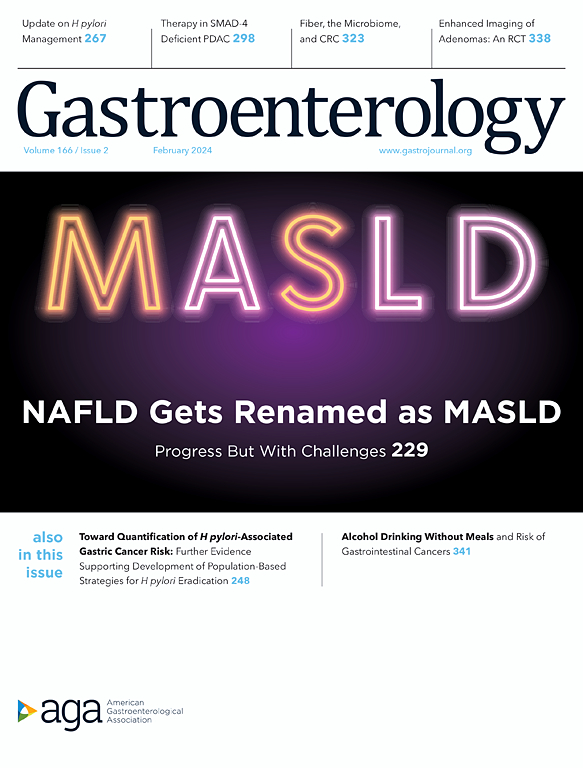Active inflammatory bowel disease on intestinal ultrasound during pregnancy is associated with an increased risk of adverse pregnancy and neonatal outcomes independent of clinical and biochemical disease activity.
IF 25.7
1区 医学
Q1 GASTROENTEROLOGY & HEPATOLOGY
引用次数: 0
Abstract
Background and Aims
Clinically active inflammatory bowel disease (IBD) is associated with an increased risk of adverse pregnancy outcomes. However, the validity of clinical scores to assess antenatal disease activity is questionable. We aimed to assess whether active disease defined by intestinal ultrasound (IUS) may predict adverse pregnancy outcomes.Methods
This international prospective cohort study recruited pregnant individuals with IBD from 2017-2023 from three specialist IBD pregnancy services. Participants underwent clinical assessments and fecal calprotectin (FCP) testing in each trimester (T1, T2, and T3), and six weeks postpartum. IUS was performed in T1 and/or T2 when referral timing allowed. Univariable and multivariable log-binomial regression analyses were used to estimate the impact of IUS activity on pregnancy outcomes. Cohen κ coefficients were used to determine agreement between FCP, IUS and clinical disease activity.Results
377 participants, 198 with Crohn’s Disease (CD), were recruited. 234 women underwent an IUS during pregnancy. A maximal bowel wall thickness (BWT) >6mm in T2 was associated with a four-fold increased risk of prematurity (RR 4.01; 95% CI1.26-12.72, p=0.018) and two-fold increased risk of low-birth-weight delivery (2.19; 1.01-4.72, p=0.046). Hyperemia on IUS in T2 was associated with a three-fold increase in preeclampsia risk (3.46, 1.03-11.12, p=0.046). Each 1mm increase in BWT in T2 was estimated to increase the risk of gestational diabetes (1.08 (1.088-1.089) p<0.001) Agreement between clinical (HBI or SCCAI) and IUS/FCP activity during pregnancy was weak, particularly for CD.Conclusion
Active IBD on IUS in pregnancy is associated with an increased risk of adverse pregnancy outcomes, independent of clinical activity and FCP. Use of IUS monitoring antenatally should be considered to guide therapeutic decision making.

求助全文
约1分钟内获得全文
求助全文
来源期刊

Gastroenterology
医学-胃肠肝病学
CiteScore
45.60
自引率
2.40%
发文量
4366
审稿时长
26 days
期刊介绍:
Gastroenterology is the most prominent journal in the field of gastrointestinal disease. It is the flagship journal of the American Gastroenterological Association and delivers authoritative coverage of clinical, translational, and basic studies of all aspects of the digestive system, including the liver and pancreas, as well as nutrition.
Some regular features of Gastroenterology include original research studies by leading authorities, comprehensive reviews and perspectives on important topics in adult and pediatric gastroenterology and hepatology. The journal also includes features such as editorials, correspondence, and commentaries, as well as special sections like "Mentoring, Education and Training Corner," "Diversity, Equity and Inclusion in GI," "Gastro Digest," "Gastro Curbside Consult," and "Gastro Grand Rounds."
Gastroenterology also provides digital media materials such as videos and "GI Rapid Reel" animations. It is abstracted and indexed in various databases including Scopus, Biological Abstracts, Current Contents, Embase, Nutrition Abstracts, Chemical Abstracts, Current Awareness in Biological Sciences, PubMed/Medline, and the Science Citation Index.
 求助内容:
求助内容: 应助结果提醒方式:
应助结果提醒方式:


